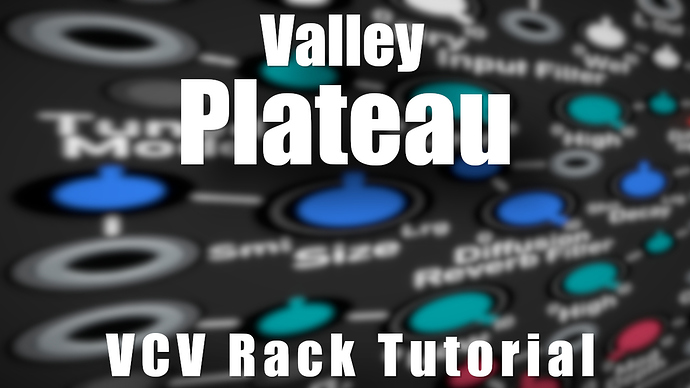In this thread, you can find all of my tutorial videos 
Oh boy, what a treat! A full synthesizer, based on the ARP Odyssey, but with many more cool features, in VCV Rack. This synthesizer sounds great, and according to the developer, there are more features to be added in the future. We’ve got 3 oscillators plus a low-frequency oscillator, two envelopes, S&H, low-pass, and high-pass filters, crazy modulation routings, and much more, all in a very CPU efficient package. In this video, I go through all of the different sections of this beautiful module and taking a closer look at how this synthesizer is working.
https://youtu.be/oi5csai28FE
finally you did it, great 
Oh boy, what a synth!
Cool Breeze
In 1996, Roland released the JP-8000 synthesizer, which had a unique oscillator type, the Super Saw. The Super Saw emulated the sound of 7 sawtooth waves detuned from one another, what resulted in a big fat sound right at the user’s fingertips. Not long ago, the developers of the Squinky Labs modules added Saws to their collection, emulating this unique waveform of the Roland synthesizer. Saws is built out of 7 sawtooth oscillators, with the ability to detune them from one another and also to control their mix. And like with all of the modules in the Squinky Labs collection, Saws is also very CPU efficient. In this video, I go through all the different features of Saws, and build a patch, from scratch, utilizing the different features.
https://youtu.be/EFjVPl9vaSM
“Saws” sounds greeeaaaaat, and the patch sounds beeeaaauuuutifuuuul!
So thanks once again for this really inspiring video, @Omri_Cohen … but let me share with you (and all the other Modular Synthesis Masters around here), something that has been around my head in the last few days:
I’m starting to see a patch like a painting … When one looks at those paintings masterpieces one realizes that the artist has stoped adding paint at some point, like “this is exactly what I saw in my mind/heart when i started the painting, so there’s nothing more to add here”
So i would like to know how do you (or any other Modular Synthesis Masters around here) stop adding things to a patch? … Is it because you think there’s too much “noise” already there, or it’s because you got the sound that you heard inside before you start building the patch?
I think also that sometimes, like in painting, some randomness is also implied in a way that perhaps one discovers accidentally a new sound that turns the inner sound into something else, maybe more evolved than the original idea and that this makes the difference that turns a simple paint/patch into a Masterpiece.
Anyway, I would like to listen to your own feelings (and of all those Modular Synthesis Masters around here) about all this.
BTW, personally i would have stoped with the patch at the point you saved the patch for the first time, and i would have started to build some melody over it … but this is my own feeling 
P.S.: Thanks Squinky Labs for your woderful modules 
A few days ago, a new and improved version of the Chebyshev oscillator from Squinky Labs was released, and oh boy, it’s lots of fun! It has a few new controls like lag settings for the modulation of the different waveshapers and a semi-tone knob for tuning the oscillator in steps of semi-tones. It also has a few aesthetic improvements, and all in all, it sounds fantastic, and it’s very CPU efficient. In this video, I go through all of its features, and I build a patch, from scratch, utilizing them, demoing some of the things Chebyshev can do. http://bit.ly/chebyshevtut
Another great and very informative tutorial by Omri. If you have not watched you are missing out.
Good one Omri, very informative! The key to Cheby is definately modulating the harmonics, I can see that. You can get some really lovely bubbly sounds from that.
Thanks mate!
Thank you, Lars! Yeah, The harmonics can really add to a sound.
keep the hits comming! thx again Omri
Thanks, mate! Cheers!
I don’t like to look at effects as “only” effects, but rather as instruments, an integral part of a composition, but sometimes I encounter effects like Plateau from Valley, that also the word Instrument is not enough to describe them… In its core, it’s a plate reverb, but it’s so much more than that. And anyway, also as “just” a reverb, it’s one of the best sounding reverbs I ever encountered, not only in VCV Rack. So in this video, I go through all of its features, and I build a patch, from scratch, and having fun ![]()
![]() http://bit.ly/plateauvalley
http://bit.ly/plateauvalley
VCV Rack is a beautiful sound design tool, offering a broad palette of tools to choose from, and almost endless possibilities combining them all. In this video, I synthesize a few storm sounds, creating rain, wind, and thunder, all with different types of noise as a sound source. Of course, there are many ways for creating storm sounds, and with every tweak of a knob the vibe of the storm is changing, so feel free to download the patch and experiment, creating different effects. All the sounds you hear in the video were created in VCV Rack. http://bit.ly/2EFdJZZ
Very nice!
Thanks!
That’s a great one Omri! The rain was extremely convincing.
Dude. That rain, I tried to watch the video after a long day and just fell asleep to it, it was so nice until I woke up to a youtube ad, oops! I still need to re-watch so I can figure out how you actually made it. Seriously, I love these sound effect or sound design type videos, that’s some good stuff right there, thanks Omri!


